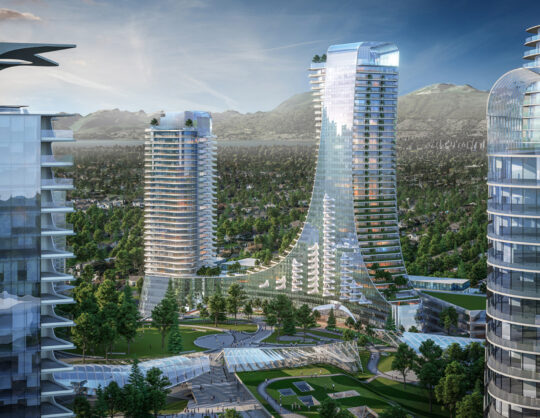Service: Peer Review
King Animal Hospital
Fitout and Peer Review
The King Animal Hospital is a state-of-the-art multidisciplinary referral and emergency hospital for small animals and equines, complete with MRI’s and medical gas systems.
HH Angus provided mechanical consulting services for the fitout of the King Animal Hospital. Our scope of work included a peer review and report identifying potential gaps between the base building mechanical infrastructure and the programming and capacity requirements for the state-of-the-art animal hospital. Following the peer review and report, we provided full mechanical design services for the fitout, from schematic design through to construction administration and project close-out.
The fitout included approximately 60,000 FT2 in a 4-storey greenfield facility, accommodating a wide range of program elements including 8 operating rooms, 12 exam rooms, an MDRD sterilization room, laboratory and pharmacy, diagnostic imaging (MRIs, CT Scan) suites, hydrotherapy, and physiotherapy, as well as support and administrative spaces.
The sub-cellar is home to an equine treatment area with CT equipment outfitted with robotic arms, and an MRI with an adjacent horse lift. An arena will be used for equine physiotherapy. A large heated ramp from grade was selected over an animal elevator to provide a safer, and less stressful, mode of transportation for the horses when moving between floors. The small animal services area of the sub-cellar features three aquatic treadmills, a hydrotherapy pool, and a hyperbaric oxygen chamber.
The cellar level includes the staff gym, lounge, meeting areas, and a dog quarantine with an exam room and 17+ dog runs. Oxygen connections to the cages and foot baths in the floor support infection prevention and control.
The ground floor features an equine surgical area, including recovery, dirty surgery area (two surgeries performed simultaneously), and an equine water treadmill. It also houses a treatment area for dogs, cats and exotics, including dentistry area, and a canine showcase area with three surgery, CT, x-ray and neurological rooms with MRI equipment.
The second floor houses staff meeting spaces and amenities. A multipurpose space doubles as a surgical support area, Learning Centre, and workshop.
The base building infrastructure was in place prior to HH Angus joining the project, which meant our team was tasked with working in the confines of a building shell that was already in place. This presented challenges at the cellar level, where the team had to design while accounting for low floor to floor heights.
The hospital had not yet retained any permanent staff during the design stage, and many of the programming elements relied on recommendations from other consultants/doctors/experts during the design-stage user group meetings. Once permanent staff were hired for key departments, the design team worked with the client to make adjustments to the layouts and equipment based on staff input.
Although an animal hospital does not fall under the same CSA standards required for human
hospitals, there is a trend towards meeting those standards in animal care facilities. HH Angus wrote design briefs for systems and features that the client chose for this facility, many of which aligned with CSA requirements for a state-of-the-art human hospital.
SERVICES
Mechanical Engineering | Peer Review
PROJECT FEATURES
Size: 60,000 ft2 | Status: Completed 2024
LOCATION
King City, Ontario
KEY SCOPE ELEMENTS
Spaces for diagnostic imaging, hydrotherapy, surgery, physiotherapy, and support and administrative space | Therapy arena and pools | Staff amenities
Oakridge Centre
Redevelopment
Vancouver's Oakridge Centre is a visionary mixed-use redevelopment of approximately 4.3 million square feet, plus residential areas. The work will be completed in two phases and will encompass a vibrant mix of retail, office, residential, cultural, and civic spaces, along with a landscaped rooftop park.
HH Angus provided fire protection Engineer of Record design services for approximately 2.5 million ft2 of the retail, parkade and service areas, as well as peer review of the central plant engineering.
An interesting aspect of our project scope is the multiple water parcels and phasing, which meant needing to design each section with expansion in mind. Our project design work is being completed entirely in Revit, with a program called Autosprink that allows us to place the sprinkler heads and then connect them to provide highly-detailed hydraulic calculations. This involves laying out heads, branches and mains, and performing all calculations to present for sprinkler permits. The design also includes multiple fire pumps and a back-up cistern to store water on-site for use in the event of waterflow emergency.
The project requires a strong focus on effective communication. Our team's seamless collaboration with multiple partners and consultants through open and inclusive communication channels encouraged the flow of information and ideas, fostering creative problem-solving and innovative solutions. These often required coming up with alternative code-compliant solutions.
Despite only joining the project during design development, we successfully applied cutting-edge software and project management techniques to deliver our assigned scope within the designated time frame. As a result, we have been awarded additional project scope and the opportunity to further contribute to the overall success of the project.
SERVICES
Fire Protection, Phase 1A & B | District energy plant peer review
PROJECT FEATURES
2,600 residences | Office space for 3,000 workers across multiple towers | 2.5 million ft2 of retail, parkade and service areas | Status: Completion estimated for 2027
LOCATION
Vancouver, British Columbia
KEY SCOPE ELEMENTS
Our team's close collaboration with multiple partners and consultants through open and inclusive communication channels encouraged productive flow of information and ideas, fostering creative problem-solving and innovative solutions

Photos courtesy of Adamson Associates Architects.
Efficient resource allocation
Given the vast scale of the project, it has been important to identify critical resource needs and to optimize their deployment in order to avoid bottlenecks.
